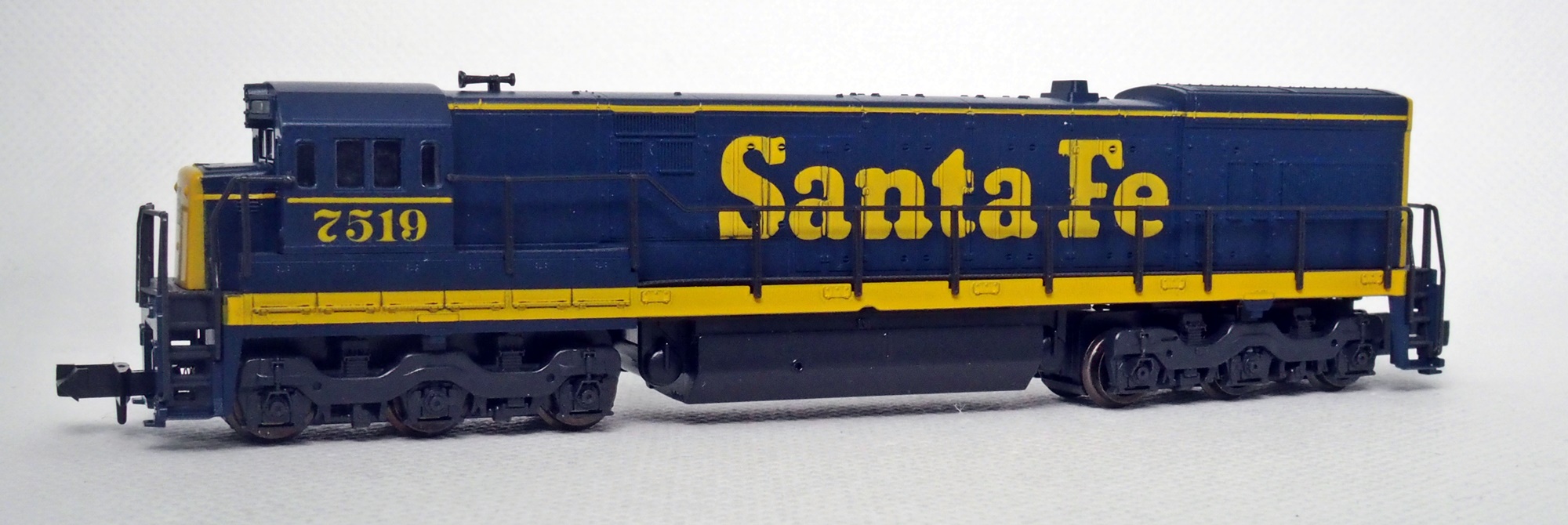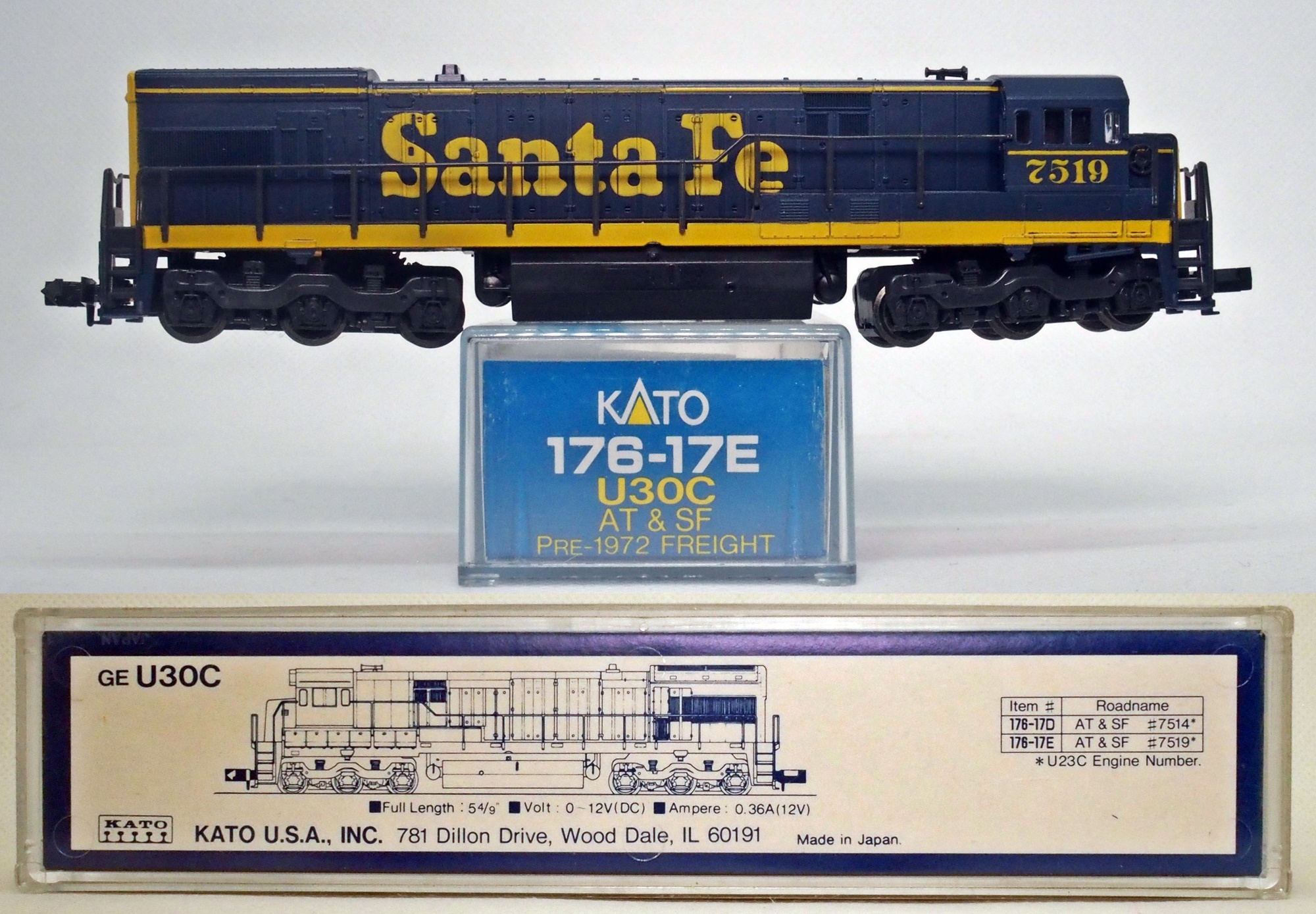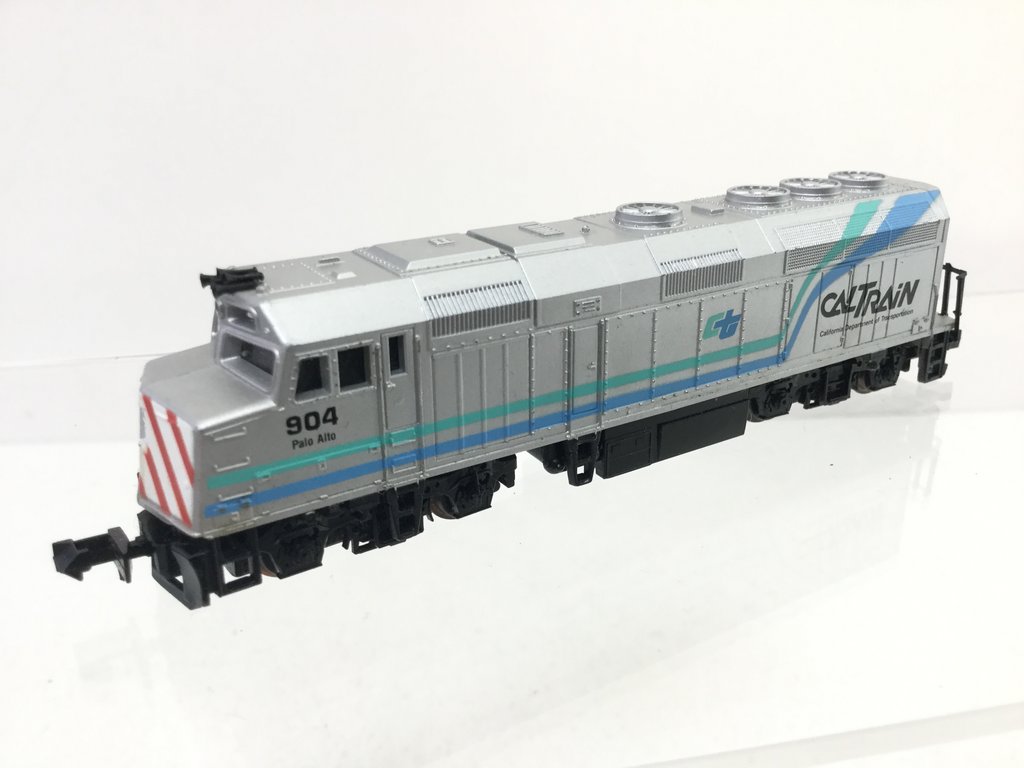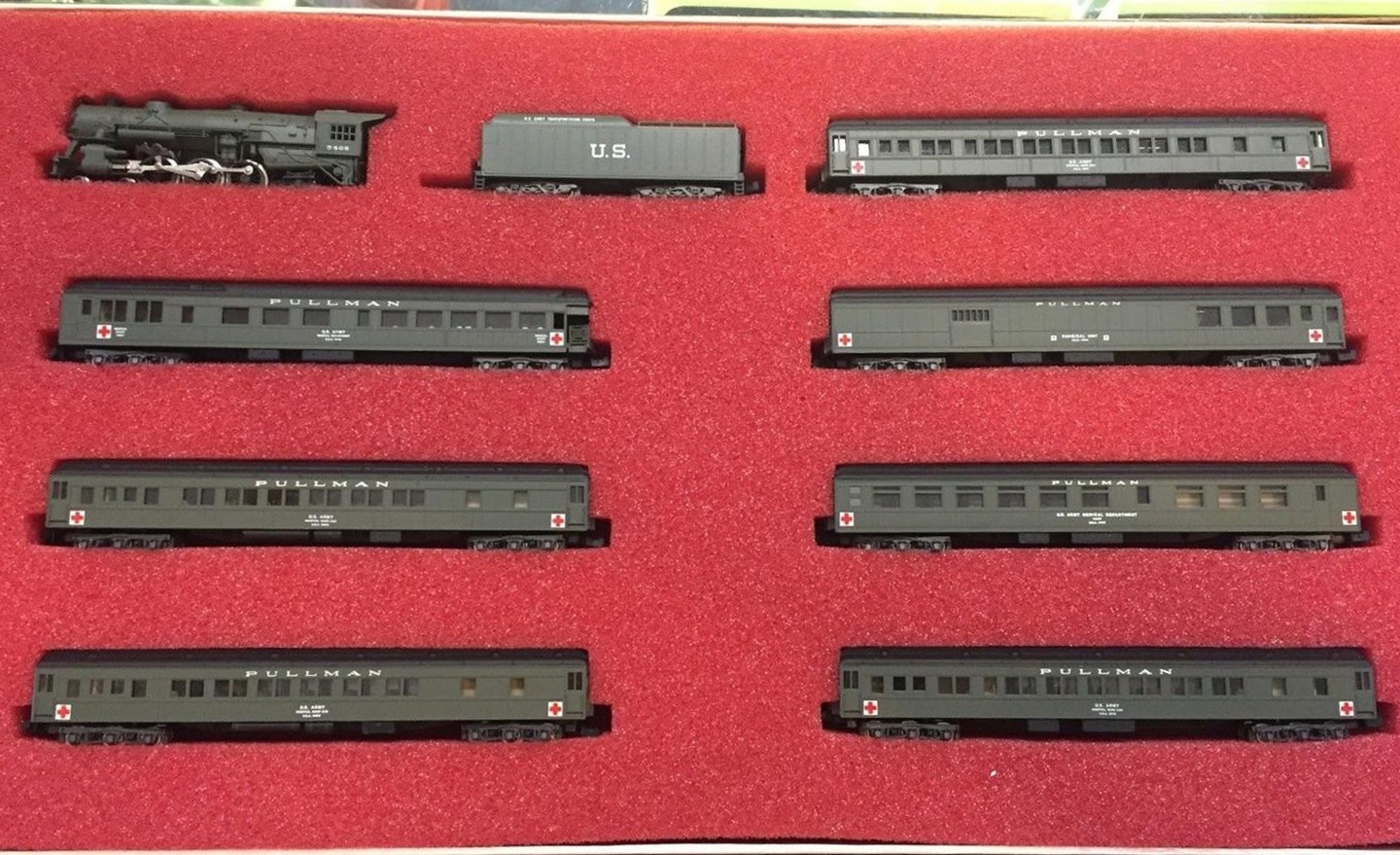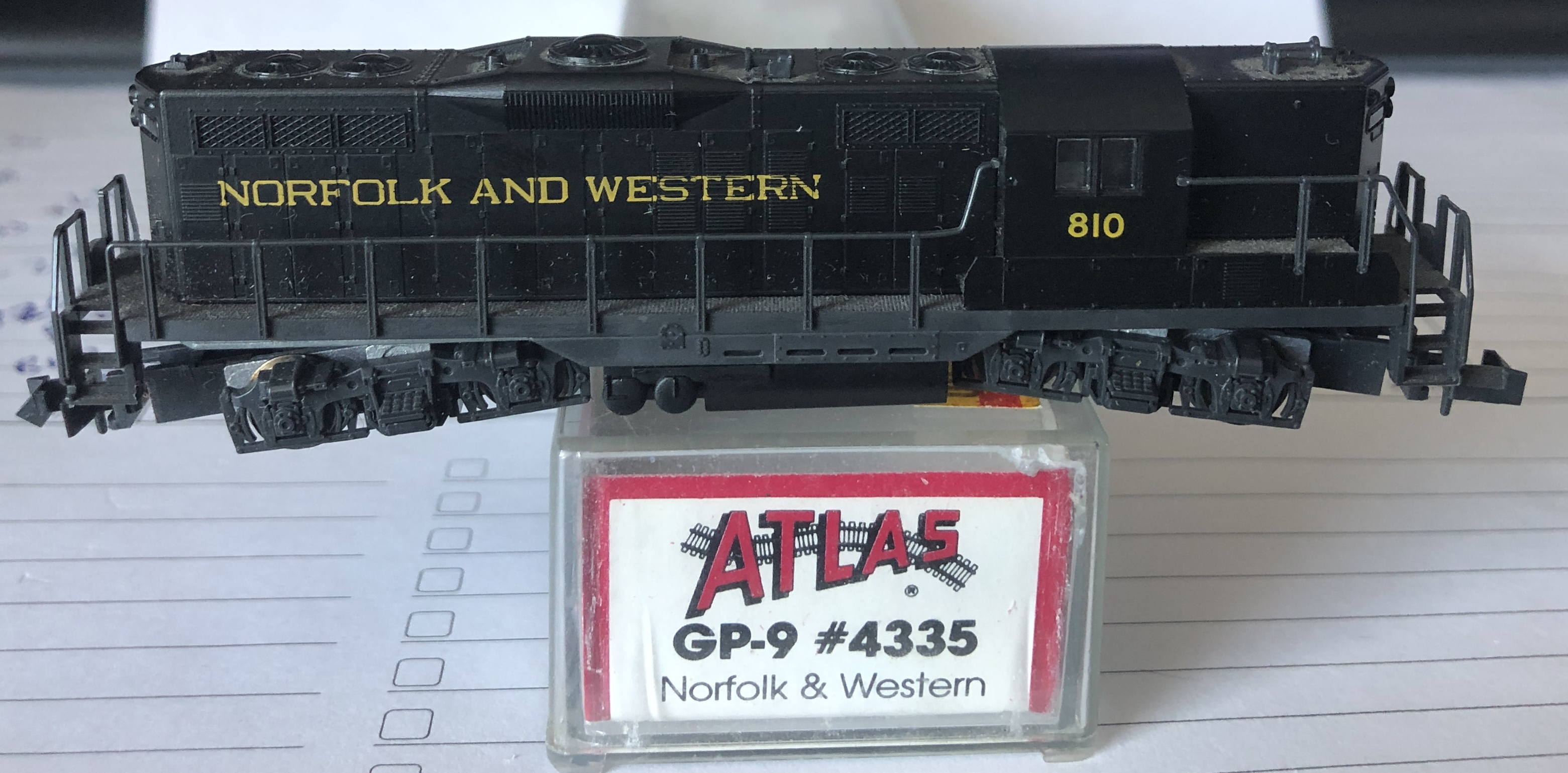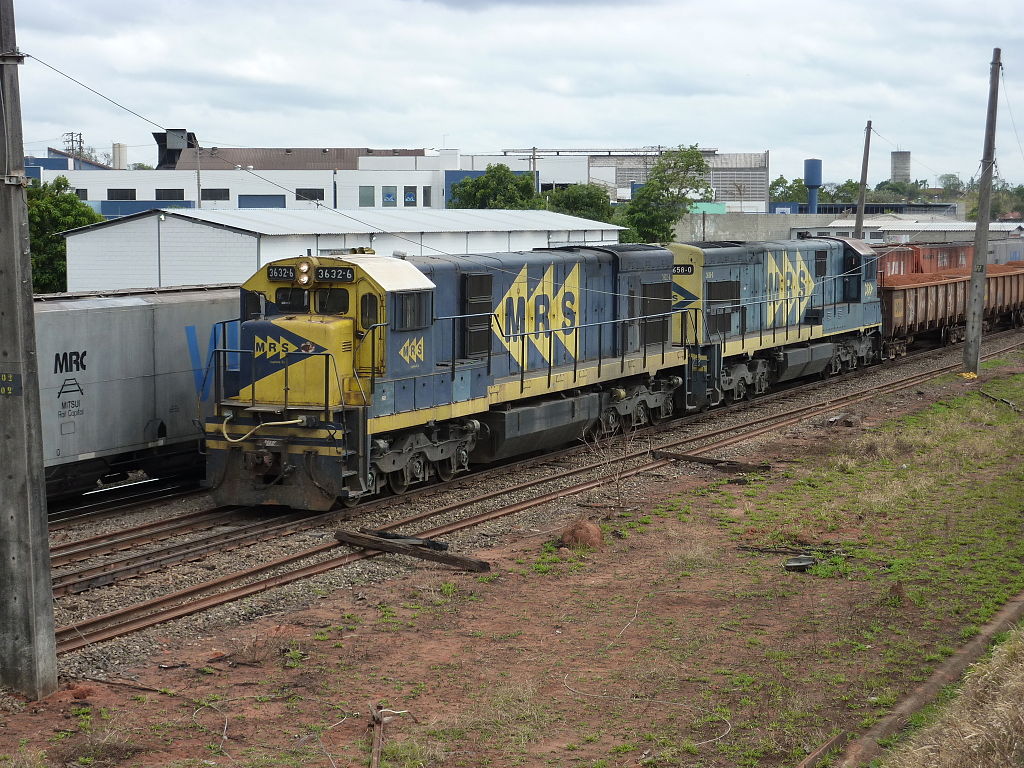Model Information: The GE U23C and U30C models were first released by Kato in 1989. A second release appeared in 1991. Kato reworked this locomotive in 2010 to create a more typical post-2000 model. The 2010 version features a redesigned DCC-Ready mechanism with a new detailed underframe which allows the locomotive to be fitted with body mounted, magnetic knuckle couplers. The two models have only minor detail differences in the shells.
The modern (2010+) version features:
The modern (2010+) version features:
- Locomotives feature directional white LED headlights and illuminated preprinted number boards
- Powerful Kato mechanism powered by a 5-pole flywheel motor and featuring a 9 3/4" minimum turning radius.
- Re-designed body shell to equip the locomotive with body mounted KATO magnetic knuckle couplers.
- DCC friendly and ready for drop in decoder installation.
- Smooth rolling blackened metal wheels.
- Optional untinted clear headlights and number-boards available for using DCC boards with tinted LEDs.
DCC Information:
Models produced since 2010 accept the following plug-in decoders:
- Digitrax DN163K1C : 1 Amp N Scale Mobile Decoder for Kato N scale SD40-2 locos made from year 2006 onward.
- TCS K1D4-NC
Models produced since 2010 accept the following plug-in decoders:
- Digitrax DN163K1C : 1 Amp N Scale Mobile Decoder for Kato N scale SD40-2 locos made from year 2006 onward.
- TCS K1D4-NC
Prototype History: The 2300 horsepower GE U23C road switcher diesel-electric locomotive model was first offered by GE in 1968, and featured a V-type 12 cylinder version of the standard GE FDL diesel motor. Designed as a competitor to EMD's SD38 and SD39 series, it was intended for heavy transfer, drag and hump service where speed was not a priority. Other than six tall hood doors matching six power assemblies per side, there are very few features which distinguish the U23C from the U30C. The U30C has eight tall hood doors per side, a function of the V16 within.
A total of 73 units were built at Erie including 20 for export to Brazil. An additional 150 units were built by GE de Brazil from 1972–1976, some as kits supplied by GE.
A total of 73 units were built at Erie including 20 for export to Brazil. An additional 150 units were built by GE de Brazil from 1972–1976, some as kits supplied by GE.
Road Name History: The Atchison, Topeka and Santa Fe Railway (reporting mark ATSF), often abbreviated as Santa Fe or AT&SF, was one of the larger railroads in the United States. Chartered in February 1859, the railroad reached the Kansas-Colorado border in 1873 and Pueblo, Colorado, in 1876. To create a demand for its services, the railroad set up real estate offices and sold farm land from the land grants that it was awarded by Congress. Despite the name, its main line never served Santa Fe, New Mexico, as the terrain was too difficult; the town ultimately was reached by a branch line from Lamy.
The Santa Fe was a pioneer in intermodal freight transport, an enterprise that (at one time or another) included a tugboat fleet and an airline (the short-lived Santa Fe Skyway). Its bus line extended passenger transportation to areas not accessible by rail, and ferryboats on the San Francisco Bay allowed travelers to complete their westward journeys to the Pacific Ocean. The ATSF was the subject of a popular song, Harry Warren & Johnny Mercer's "On the Atchison, Topeka and the Santa Fe", written for the film, The Harvey Girls (1946).
The railroad officially ceased operations on December 31, 1996, when it merged with the Burlington Northern Railroad to form the Burlington Northern & Santa Fe Railway.
Read more on Wikipedia.
The Santa Fe was a pioneer in intermodal freight transport, an enterprise that (at one time or another) included a tugboat fleet and an airline (the short-lived Santa Fe Skyway). Its bus line extended passenger transportation to areas not accessible by rail, and ferryboats on the San Francisco Bay allowed travelers to complete their westward journeys to the Pacific Ocean. The ATSF was the subject of a popular song, Harry Warren & Johnny Mercer's "On the Atchison, Topeka and the Santa Fe", written for the film, The Harvey Girls (1946).
The railroad officially ceased operations on December 31, 1996, when it merged with the Burlington Northern Railroad to form the Burlington Northern & Santa Fe Railway.
Read more on Wikipedia.
Brand/Importer Information: KATO U.S.A. was established in 1986, with the first U.S. locomotive model (the GP38-2, in N-Scale) released in 1987. Since that time, KATO has come to be known as one of the leading manufacturers of precision railroad products for the modeling community. KATO's parent company, Sekisui Kinzoku Co., Ltd., is headquartered in Tokyo, Japan.
In addition to producing ready-to-run HO and N scale models that are universally hailed for their high level of detail, craftsmanship and operation, KATO also manufactures UNITRACK. UNITRACK is the finest rail & roadbed modular track system available to modelers today. With the track and roadbed integrated into a single piece, UNITRACK features a nickel-silver rail and a realistic-looking roadbed. Patented UNIJOINERS allow sections to be snapped together quickly and securely, time after time if necessary.
The Kato U.S.A. office and warehouse facility is located in Schaumburg, Illinois, approximately 30 miles northwest of Chicago. All research & development of new North American products is performed here, in addition to the sales and distribution of merchandise to a vast network of wholesale representatives and retail dealers. Models requiring service sent in by hobbyists are usually attended to at this location as well. The manufacturing of all KATO products is performed in Japan.
Supporters of KATO should note that there is currently no showroom or operating exhibit of models at the Schaumburg facility. Furthermore, model parts are the only merchandise sold directly to consumers. (Please view the Parts Catalog of this website for more specific information.)
In addition to producing ready-to-run HO and N scale models that are universally hailed for their high level of detail, craftsmanship and operation, KATO also manufactures UNITRACK. UNITRACK is the finest rail & roadbed modular track system available to modelers today. With the track and roadbed integrated into a single piece, UNITRACK features a nickel-silver rail and a realistic-looking roadbed. Patented UNIJOINERS allow sections to be snapped together quickly and securely, time after time if necessary.
The Kato U.S.A. office and warehouse facility is located in Schaumburg, Illinois, approximately 30 miles northwest of Chicago. All research & development of new North American products is performed here, in addition to the sales and distribution of merchandise to a vast network of wholesale representatives and retail dealers. Models requiring service sent in by hobbyists are usually attended to at this location as well. The manufacturing of all KATO products is performed in Japan.
Supporters of KATO should note that there is currently no showroom or operating exhibit of models at the Schaumburg facility. Furthermore, model parts are the only merchandise sold directly to consumers. (Please view the Parts Catalog of this website for more specific information.)
Item created by: Alain LM on 2018-04-02 06:06:02. Last edited by Alain LM on 2021-06-28 04:24:01
If you see errors or missing data in this entry, please feel free to log in and edit it. Anyone with a Gmail account can log in instantly.
If you see errors or missing data in this entry, please feel free to log in and edit it. Anyone with a Gmail account can log in instantly.


